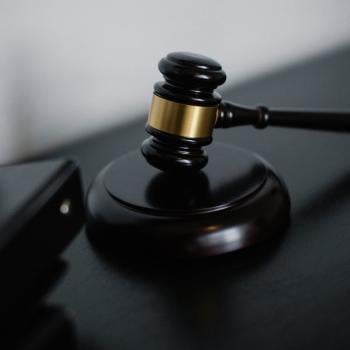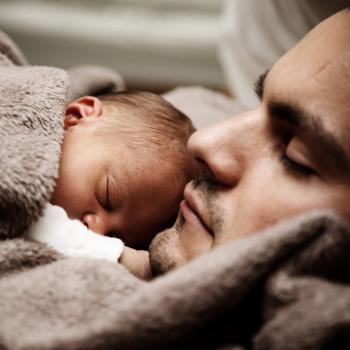
Excerpt from the book Copyright © 2025 by Karl Forehand
What Do I Feel?
“Curiosity will conquer fear even more than bravery will.”
–James Stephens
Understanding trauma and healing involves recognizing the importance of expressing feelings and identifying their sources within ourselves, which is crucial for recovery. While this concept is significant, religion may not always address it comprehensively. Faith often prioritizes established narratives over individual feelings and particular facts.
During my deep involvement with religion, it was often suggested that individuals should prioritize faith, hoping their emotions would align. This approach felt misguided, leading to adherence to belief systems or creeds even when one’s instincts and emotions disagree. Since I began deconstructing these beliefs, I’ve learned from several wise individuals that our feelings can signal underlying issues such as unprocessed trauma and toxic shame.
We have identified a highly effective method, focusing, which utilizes the phrase “A part of me feels…” This practice fosters a connection between our mind and body where trauma resides. As the saying goes, “We have to feel it to heal it.” Engaging with this emotion can help integrate the trauma better and facilitate more successful progress.
Ignoring Our Emotions
Many people in my life taught me to suppress my emotions and believe that everything was fine. As a result, I overlooked my pain and endured the suffering. I learned to distrust my judgment, relying instead on creeds and doctrinal statements rather than my intuition and awareness. Without validation for my emotions, I buried them deep, striving to demonstrate my dedication, determination, and commitment to myself and others.
But this never helped heal me from my trauma and shame. In a way, because organized religion was uncomfortable with my emotional expression, the trauma didn’t fade, and my shame became more deeply rooted.
“What do I feel, and where do I feel it?”
Reflecting on my recent experiences, I encourage everyone to regularly ask themselves, “What am I feeling, and where do I feel it?” This practice helps me connect my mind and body, offering an opportunity to process trauma and heal from past wounds. Ignoring these emotions ensures they will resurface unexpectedly before long.
Eugene Gendlin states, “What is split off, not felt, remains the same. When it is felt, it changes. Most people don’t know this! They think that by not permitting the feeling of their negative ways, they make themselves good. On the contrary, that keeps these negatives static, the same from year to year. A few moments of feeling it in your body allows it to change. If there is in you something bad or sick or unsound, let it inwardly be and breathe. That’s the only way it can evolve and change into the form it needs.”[1]
The goal of validating our emotions isn’t to suppress them but to integrate them. When I encounter triggers in the future, I can choose to respond instead of merely reacting. Although this strategy doesn’t eliminate triggers, it allows us to pause and respond thoughtfully, engaging a more advanced part of our brain when impacted.
Learning and moving forward.
Recognizing how we are affected is a more genuine form of bravery than suppressing our emotions and ignoring our pain. Embracing our feelings allows us to trust our intuition. By acknowledging these emotions in our bodies, we can better reconcile with our past and move forward into the future.
To understand how our nervous system stores trauma, consider reading The Body Keeps the Score and, or our book, Evolving from Religious Trauma.
I encourage you to deepen your understanding of trauma. As you do, you’ll recognize how many of our systems, including religion and our families, often misinterpret trauma and the role of emotions in this context. If those in power lack an understanding of trauma, they might unintentionally cause more harm than good by prioritizing organizational goals over the well-being of individuals.
Questions About Questions
What belief(s) did you inherit concerning this question?
How is your response to this question changing?
[1] https://gsfocusing.com/about/about-focusing-and-gendlin/
Learn to be Where You Are (Presence)
Learn to be Who You Are (Authenticity)
Finding Regulating and Somatic Healing
Are you genuinely committed to deconstruction and seeking more profound answers?
If that’s the case, this book was created for you. As a former pastor, I made the mistake of deconstructing a bit and then trying to start something new, as I was trained to do. The problem with that approach is that I wasn’t ready to begin something new.

I hadn’t delved deeply enough or asked enough questions. The first stage of deconstruction typically includes assessing our beliefs regarding hell and the afterlife, supporting queer individuals and women in their fight for equality, and achieving a better understanding of racism and privilege.
Many people in deconstruction communities expend significant effort criticizing Evangelicals and attempting to gain a following. While I believe they deserve intense criticism, this strategy fails to effectively tackle the problem because they generally don’t listen to us!
Our tendency to punish our former organizations sometimes overlooks the challenging process of healing and growth. It is the same trap we fell into in our former associations.

Campfires occupy a special spot in the mosaic of history. They act as communal hubs across different cultures and faiths. The campfire’s circular design fosters equal participation within the collective group. The flames at the center draw our focus and encourage face-to-face interactions as we exchange experiences, wisdom, and insights about the world beyond. It is where legendary myths and tales are born.
Order Now – Study Questions in each chapter!
This book is named Campfires in the Desert as it stems from nearly 400 discussions we held with individuals on our podcast, The Desert Sanctuary, and our aspiration to improve.
Available now!
Thanks for considering us, autographed copies are $20
Karl Forehand Campfires in the Desert – A Soft Book Release. Karl Forehand is a former pastor, podcaster, and award-winning author. His books include Out into the Desert, Leaning Forward, Apparent Faith: What Fatherhood Taught Me About the Father’s Heart, The Tea Shop, and Being: A Journey Toward Presence and Authenticity. He is the creator of The Desert Sanctuary podcast and community. He has been married to his wife Laura for 35 years and has one dog named Winston. His three children are grown and are beginning to multiply! You can read more about the author here.














